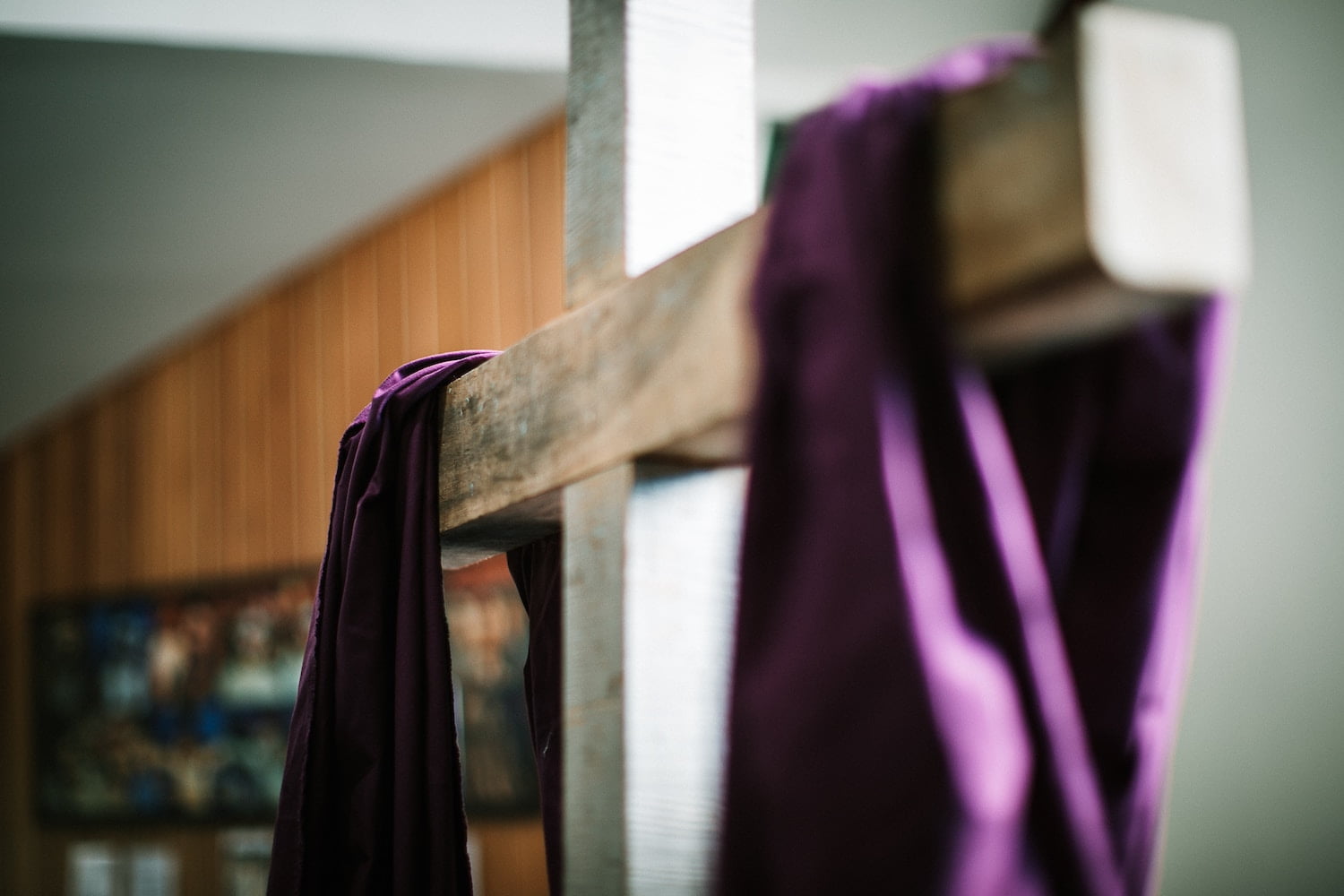VEILING OF THE CROSS
With the Fifth Sunday of Lent, the focus of our Lenten observance shifts.
The first part of the Lenten season, starting with Ash Wednesday, invites us to reflect on repentance and baptism, so that both the catechumens and the faithful are disposed to celebrate the paschal mystery.
- Catechumens are led to the sacraments of initiation by means of election, the scrutinies, and catechesis.
- The faithful, listening to the word of God and devoting themselves to prayer are prepared through spirit of repentance to renew their baptismal promises.
During Lent the altar should not be decorated with flowers, except on the Fourth Sunday (Laetare) and on Solemnities and Feasts.
During the period after the Fifth Sunday of Lent, the prefaces and prayers used in liturgy direct our attention to the passion of the Lord on the cross. The Lutheran Church maintains a focus on the passio during the entire 40 days, but the Roman liturgy attributes this character only to the end of the Lenten season: The Palm Sunday is also called Sunday of the Passion of the Lord. It was in the Middle Ages that the time of passio was extended to two weeks before Easter and thus the Fifth Sunday of Lent also carries this flavor. It begins the actual time of passion.
Traditionally, the cross / crucifix, as well as other altar-paintings are veiled until the moment of veneration of the cross on Good Friday. This custom goes back to the so-called “fasting veil” used since the 11th century to cover the view of the altar. The “fasting of the eyes” was meant as a sign of penance and perhaps an expression of solidarity with penitents excluded from the liturgy.


